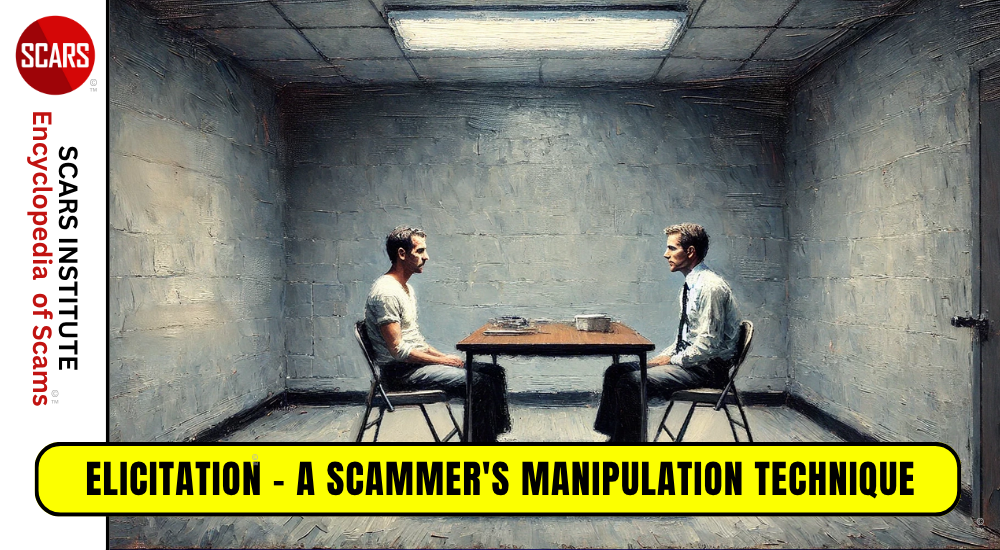
The facial recognition databases are coming.
Why aren’t the privacy laws?
Now that the US supreme court is finally considering cellphones, let’s get ahead of Moore’s Law and defend our new metadata
The FBI estimates that it will store over 50m faces images by 2015 in a market that will be worth $20bn by the end of the decade – without regulation. Photograph: Alamy
Online dating is kind of like going on a shopping trip. But instead of looking at pairs of shoes, we’re perusing people, glancing over their photos and profiles in an effort to gauge how interested we might be in them. So why shouldn’t we be warned, like a grocery-store expiration date, when one is rotten?
Such is the intention of CreepShield, a new web-browser extension that uses facial recognition technology to allow users to scan the faces they see on social networking websites – Facebook, eHarmony, OKCupid, even Grindr – and see if the faces match any public records in databases of sex offenders.
The app seems somewhat useful. Unless, of course, you’re mistakenly identified as a sex offender.When I uploaded my own photo after writing a recent Newsweek cover story on biometric surveillance, the CreepShield search engine showed results that were less than 50% sure I was a match – though there were some people in the database who looked eerily similar to me.
Thankfully, my data-filled profile photo didn’t have a match, but actual sex offenders “have no right to privacy”, CreepShield’s founder told me.
This raises the question: will the rest of us have the right to our own faces when they get stored in search engines of the future? The US government is currently building the largest biometrics database in the world with Next Generation Identification, a system meant to help identify criminals. The FBI estimates that it will store over 50m faces images by 2015, according to documents obtained by the Electronic Frontier Foundation.
Facial recognition technology has plenty of practical applications. Germany is beginning to use biometric data to scan individuals at border crossings, and Facebook even collects face patterns to suggest who should be tagged in photos.
The technology is contributing to what will become a $20bn market by 2020, according to the Secure Identity Biometrics Association (Siba). Companies including Animetrics and Cognitec are selling their technology to startups like CreepShield as well as to police and military, with success rates of over 98% for facial matching. From a clear face image, ethnicity can be identified with an error rate of 13% and gender with an error rate of 3%.
Unfortunately, United States law has not caught up with the technology’s expansion. And as facial recognition becomes more present in everyday life, we are going to need new regulations protecting the anonymity of our faces, just as we are protecting our cellphones and, hopefully, the metadata therein.
If we don’t, we will lose our ability to be anonymous – and even when we’re talking about identifying sex offenders, retaining some measure of anonymity is important. Would you really want to cast a controversial vote or publicly protest in a world where your peers or the cops could track down your cheekbone pattern in seconds?
With Facebook’s burgeoning databases as well as the FBI’s s Next Generation Identification system, it’s now easier than ever to get access to a photo of a person’s face and turn it into a kind of fingerprint on steroids, without them knowing. We need to find a way to preserve our anonymity, and fast.
Fingerprints and DNA data are protected under US supreme court law, providing a possible precedent for face-prints. If a fingerprint or DNA test is collected without due cause, it can’t be used in court as evidence – it constitutes an unreasonable search and seizure, outlawed by the Fourth Amendment.
The supreme court is just this week embroiled in debate over whether or not search and seizure of social media and cellphone data should require a warrant. While we grapple with today’s dominant technologies, we should also be looking forward to tomorrow’s, regulating the Fourth Amendment’s application to futuristic technologies like CreepShield and Google Glass, which has banned facial recognition for now – but might not forever.
Laws should allow us to control which businesses and government entities have access to our faces and when. Individuals might opt in to facial recognition for interactive marketing campaigns or to be tracked in a retail store, but choose to be left out of unwarranted public government surveillance.
A face-print should fall under the same category as a fingerprint – and be controlled just as stringently. The US must take this opportunity to give citizens a right to their own face-prints and an ability to opt out of any facial recognition not explicitly connected to active criminal investigation. This will regulate the technology’s application before it’s too late to prevent a situation like a wrongful conviction because of a facial recognition mistake.
Otherwise, the future gets dystopian quickly. The door opens to a version of CreepShield that runs on gossip or Yelp-like reviews of people instead of a sex-offender database. (That random guy you see in the bar? Forget Lulu – try “see you later”.) Indeed, a world without facial-recognition laws is a world without strangers. Not being able to lie about height on OKCupid is the least of our worries.
-/ 30 /-
What do you think about this?
Please share your thoughts in a comment below!
Article Rating
Table of Contents
RATE THIS ARTICLE?
LEAVE A COMMENT?
Recent Comments
On Other Articles
- Nikolaus on Dating Scammers Paradise: Ivory Coast: “The Ivory Coast romance scam is still going on. It seems that local authorities don’t handle the issue effectively!” Dec 10, 02:17
- on The SCARS Institute Top 50 Celebrity Impersonation Scams – 2025: “Thank you – we will.” Dec 7, 11:41
- on The SCARS Institute Top 50 Celebrity Impersonation Scams – 2025: “You should add Sean Bean to your list of Celebrities. This one is very good, and persistent. He will be…” Dec 2, 12:07
- on How You Think & Talk About Your Scam Affects Your Recovery: “I have hung on to the scams for far too long. With the intervention of an all-merciful God, I have…” Nov 6, 22:13
- on Disengaging From A Fake Scam Relationship: “Taci, you may want to join our new support community at www.SCARScommunity.org” Nov 6, 03:01
- on Disengaging From A Fake Scam Relationship: “This particular article helped me discover the many things I did wrong the first time I was scammed. I should…” Nov 5, 22:49
- on About the SCARS RomanceScamsNOW.com Website – 24 Years Published: “It was unavailable for a few days, but it is available again. If he would be interested, he is welcome…” Nov 5, 00:59
- on About the SCARS RomanceScamsNOW.com Website – 24 Years Published: “My husband has been scammed and your classes have been helping him but now he can’t seem to access them.…” Oct 26, 14:57
- on Talia Shepard – Impersonation Victim – Stolen Photos – 2024: “Hi, I’m Patrick from Belgium and I found this site by chance, so I just got to know it, and…” Oct 17, 23:46
- on Talia Shepard – Impersonation Victim – Stolen Photos – 2024: “Hallo ik ben Patrick uit Belgie en het is in verband over PayPal. Ik heb het dit jaar spijtig genoeg…” Oct 17, 23:08
ARTICLE META
Important Information for New Scam Victims
- Please visit www.ScamVictimsSupport.org – a SCARS Website for New Scam Victims & Sextortion Victims
- Enroll in FREE SCARS Scam Survivor’s School now at www.SCARSeducation.org
- Please visit www.ScamPsychology.org – to more fully understand the psychological concepts involved in scams and scam victim recovery
If you are looking for local trauma counselors please visit counseling.AgainstScams.org or join SCARS for our counseling/therapy benefit: membership.AgainstScams.org
If you need to speak with someone now, you can dial 988 or find phone numbers for crisis hotlines all around the world here: www.opencounseling.com/suicide-hotlines
A Note About Labeling!
We often use the term ‘scam victim’ in our articles, but this is a convenience to help those searching for information in search engines like Google. It is just a convenience and has no deeper meaning. If you have come through such an experience, YOU are a Survivor! It was not your fault. You are not alone! Axios!
A Question of Trust
At the SCARS Institute, we invite you to do your own research on the topics we speak about and publish, Our team investigates the subject being discussed, especially when it comes to understanding the scam victims-survivors experience. You can do Google searches but in many cases, you will have to wade through scientific papers and studies. However, remember that biases and perspectives matter and influence the outcome. Regardless, we encourage you to explore these topics as thoroughly as you can for your own awareness.
Statement About Victim Blaming
Some of our articles discuss various aspects of victims. This is both about better understanding victims (the science of victimology) and their behaviors and psychology. This helps us to educate victims/survivors about why these crimes happened and to not blame themselves, better develop recovery programs, and to help victims avoid scams in the future. At times this may sound like blaming the victim, but it does not blame scam victims, we are simply explaining the hows and whys of the experience victims have.
These articles, about the Psychology of Scams or Victim Psychology – meaning that all humans have psychological or cognitive characteristics in common that can either be exploited or work against us – help us all to understand the unique challenges victims face before, during, and after scams, fraud, or cybercrimes. These sometimes talk about some of the vulnerabilities the scammers exploit. Victims rarely have control of them or are even aware of them, until something like a scam happens and then they can learn how their mind works and how to overcome these mechanisms.
Articles like these help victims and others understand these processes and how to help prevent them from being exploited again or to help them recover more easily by understanding their post-scam behaviors. Learn more about the Psychology of Scams at www.ScamPsychology.org
Psychology Disclaimer:
All articles about psychology and the human brain on this website are for information & education only
The information provided in this article is intended for educational and self-help purposes only and should not be construed as a substitute for professional therapy or counseling.
While any self-help techniques outlined herein may be beneficial for scam victims seeking to recover from their experience and move towards recovery, it is important to consult with a qualified mental health professional before initiating any course of action. Each individual’s experience and needs are unique, and what works for one person may not be suitable for another.
Additionally, any approach may not be appropriate for individuals with certain pre-existing mental health conditions or trauma histories. It is advisable to seek guidance from a licensed therapist or counselor who can provide personalized support, guidance, and treatment tailored to your specific needs.
If you are experiencing significant distress or emotional difficulties related to a scam or other traumatic event, please consult your doctor or mental health provider for appropriate care and support.
Also read our SCARS Institute Statement about Professional Care for Scam Victims – click here to go to our ScamsNOW.com website.
















Thank you for your comment. You may receive an email to follow up. We never share your data with marketers.